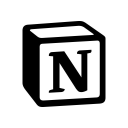On Creating A Website Full Of Software Deals For Startups
Hello! Who are you and what business did you start?🔗
I am Jean-Loup Karst, the co-founder of Secret. Secret is the first platform of exclusive deals on services and software for startups. Entrepreneurs can sign up and save up to $50,000 on 70+ SaaS deals (Airtable, Pipedrive, Mailjet, etc.). It’s 100% free! It's a no-brainer.
We negotiated and curated amazing deals. They help you with your cloud hosting, your growth, your marketing automation, your product… As an example, you could benefit from:
- $1,000 on Amazon Web Services
- $2,000 credit on Airtable
- $2,000 credit on Freshworks
- €1,000 credit on Clever Cloud
- 6 months free on Sendinblue
- 6 months free on Mailjet
- $1,000 credit on Algolia
- 6 months free on Hotjar
- 6 months free on Typeform
… And many more!

When we launched our beta in April, our 100+ first users paid an annual subscription of $50 per year (roughly 1% conversion rate on our website). We generated $5K+ in revenue and decided to switch to a free model to grow user acquisition faster through network effects and monetize the database later through premium deals and affiliation with our partners.
What's your backstory and how did you come up with the idea?🔗
Back in April 2014, I launched my first startup breaz.io with 3 co-founders. We basically built a copycat of Hired. Our product was a curated hiring marketplace for tech profiles (soft eng, data science, design, etc.). Companies were applying to candidates looking for jobs. Every hire made through the platform was generating around $6-8k in revenue. It took us 18 months to grow to $500K in revenue. We never raised funds. However, at the time we started, all of the cofounders added $1,200 each in capital. That was very little given our needs in terms of design, front-end development, etc. I remember my cofounder Edouard saying if only we could get special deals for software to save money! We did not want to be accelerated/incubated to avoid giving away equity, hence we did not have access to their perks programs.
Define what you want to achieve and make sure all co-founders goals are aligned
Still, breaz.io got acquired by Hired in early 2016. 2 years later in 2018, we decided it was time to move on and go back to entrepreneurship. As we were looking for problems to solve, we remembered that pain we had in our first business and decided to tackle it and build a platform that would help startups and SMBs save money on the best software. Accelerators and incubators have perks programs. Why should it be limited to them? Why can’t all entrepreneurs benefit from those perks when launching a business in their bedroom, living room, kitchen? The idea of Secret was born.
Take us through the process of designing, prototyping, and manufacturing your first product.🔗
The initial product consisted of two things: the tech side and the partnerships side with the software providers.
Edouard and I did not have any coding skills, so he decided to join a Bootcamp program (Le Wagon) to gain the necessary Ruby on Rails skills to build an MVP, while I would focus on getting deals with a bunch of services we thought entrepreneurs would pay for.
At the end of the bootcamp, it took him around a week to build a very basic website: a landing page showcasing the deals I negotiated (Clevercloud, Mailjet, Lemlist, Mention, SalesMachine and Scalingo) and a payment funnel using Stripe API.
Below is the homepage mockup for our V1 :

After testing and validating our concept for 4-5 months, we decided to work on our V2. Edouard started mockuping the website and we hired 3 freelancers (2 engineers: front-end + back-end and 1 designer)
Below some mockups of the V2: (in French sorry)


Describe the process of launching the business.🔗
Our goal was to launch fast and get as much feedback as possible from our users to assess to what extent our idea had potential. We negotiated deals with 6 software applications for cloud hosting, emailing, sales automation, etc. We approached the companies by email and Linkedin. Companies are used to having accelerators/incubators ask them for deals so that the negotiation piece was not too hard, especially since we are not asking them any money. We are only asking them an exclusive deal. For them, it’s a good opportunity to acquire new users without spending money.
Our MVP was launched in April 2019. Given how basic and rustic our website was at the time, the initial feedback we gathered was pretty mixed. Most of our visitors were asking questions on the chat as ‘Is it a scam?’, ‘It is real?’. Some of our partners reported that a few visitors asked them directly if the deals really were true. As we got our first paying customers, we decided to focus on the product to build a platform we would be proud of, with great design, to gain trust from potential customers and take it to the next level.

At the time, the fee to access all of the deals was $54. To be honest, I felt a bit ashamed of our website and got surprised as I saw the first payments were being processed. I would not have paid with a credit card myself on such a website! It proved our hypothesis to be true: everyone is interested in saving money on software. It’s just a no-brainer.
To launch our beta, we essentially relied on email marketing our Linkedin contact base and got one media article as well (in French).
Since launch, what has worked to attract and retain customers?🔗
We have tested different acquisition channels and to be honest, we are still working on figuring out what works best.
1- Email marketing is still the best form of marketing. 50% open rate. You can personalize your emails through Yesware. Add people on Linkedin, extract their personal email using Phantomb Buster’s API, and then schedule your campaigns. The daily limit of several hundred emails a day works just fine.

2- I am pretty disappointed with Twitter's direct outreach. It's very hard to get replies.
3- Facebook groups are a kind of average. Reach is limited. One group can have thousands of members but only some of them will see your post. How many? 100? Also, moderators hate spamming/direct promotion. You need to add value to the community if you want to cut your way to the top of the page (e.g talk about a side-topic and rely on side-promotion). It takes time.
4- We posted on Reddit subreddits such as SaaS, startups, etc. It drove little traffic overall. There are just so many entrepreneurs posting out there looking for attention.

5- The worst of all is Linkedin groups. It just does not work. No one hangs out there. There is something that we have not tried out: launch videos on Linkedin and see how they perform. We will implement this soon as Linkedin’s algorithm seems to be promoting those types of posts a lot.
6- Arguably a decent source of user acquisition was other forums such as growth hacking forum (in French). It drove us dozens of signups. Niche forums are key.

How are you doing today and what does the future look like?🔗
We have decided to make a bold move by switching the Secret to a free model. Essentially, we are cutting our revenue lines and focusing solely on our user growth. Our bet is that we will build a much bigger user base that will be easier to monetize in a second time through premium deals and affiliation with our key partners.
At the moment we have 10 to 20 startups signing up a day for Secret. We are looking to expand that number fast through invites to grow our user base. The startup scene worldwide is growing at an insane rate and we believe we can help every entrepreneur to launch his MVP in his bedroom, kitchen or living room. This is the key moment when you need help. Right at the start. And Secret is a natural fit for that moment.
Through starting the business, have you learned anything particularly helpful or advantageous?🔗
It’s often said in the startup world that one has to find one key problem to solve, and just by looking at customer feedback you can tell you are on your way to solving a super relevant problem. I think that for our story the feedback we got from our Product Hunt launch was pretty clearly showing how much value we add to our customers.

Our biggest obstacle though was that despite having 100+ upvotes and 30+ comments, our product never made it to the Popular section. I guess it's not a coincidence as Product Hunt launched Founderclub, a similar marketplace that costs $720 a year to access all of the deals per year. I guess they did not want us to compete. We believe it was unfair, but hey, that’s the game.
I think that overall the market just got so much crowded within a few years. Back in 2015, it was so much easier to cut through the noise and have news articles talking about your startup in tech medium. Now, it’s just hard. If you don’t raise 20 million, nobody cares. Fact.
What platform/tools do you use for your business?🔗
- Email: Mailjet (users since 2014).
- Cloud hosting: Heroku because Edouard learned to use it in his coding school.
- Marketing automation: Phantombuster (LOVE their APIs that help you, for example, extract the emails of your Linkedin contact - must have). Also, Yesware (super helpful to blast emails at once and make people feel it’s a personalized email).
- Customer support: Drift free version (Drift’s marketing on Linkedin is just fantastic. It’s neuromarketing at best).
What have been the most influential books, podcasts, or other resources?🔗
We have been inspired by Jason Fried's business philosophy through his books Rework, Remote and It doesn't have to be crazy at work.
Neil Patel’s blog is a very helpful resource to get the basics of internet marketing.
I’m also a big fan of Mathieu Stefani’s podcast, Generation Do It Yourself.
Advice for other entrepreneurs who want to get started or are just starting out?🔗
- Define what you want to achieve (fame? money?). Define it in the timeframe you are targeting (be a millionaire in 5 years? Less?). Make sure all co-founders are aligned with your personal goal to avoid strategy disagreements on the run.
- Build a reversed business model (I want to make $1 million in 3 years, it means we have to sell at a valuation of X, Y revenue, so next month, we have to hit the KPIs Z in order to be aligned with that goal).
- Only raise when you have to eat dust (VCs are not entrepreneurs, they are asset managers, they want a return).
- As you launch, don’t overthink it. Just do it. Users will tell their truth.
- Don’t assume what worked in the past still works today.
Are you looking to hire for certain positions right now?🔗
We are interested in adding a third cofounder to the venture to help us grow faster. If you are an expert at growth (content/SEO) or sales (affiliation, partnerships), we would love to hear from you! Reach out to me at jeanloup@joinsecret.com.
Where can we go to learn more?🔗

Download the report and join our email newsletter packed with business ideas and money-making opportunities, backed by real-life case studies.

Download the report and join our email newsletter packed with business ideas and money-making opportunities, backed by real-life case studies.

Download the report and join our email newsletter packed with business ideas and money-making opportunities, backed by real-life case studies.

Download the report and join our email newsletter packed with business ideas and money-making opportunities, backed by real-life case studies.

Download the report and join our email newsletter packed with business ideas and money-making opportunities, backed by real-life case studies.

Download the report and join our email newsletter packed with business ideas and money-making opportunities, backed by real-life case studies.

Download the report and join our email newsletter packed with business ideas and money-making opportunities, backed by real-life case studies.

Download the report and join our email newsletter packed with business ideas and money-making opportunities, backed by real-life case studies.








